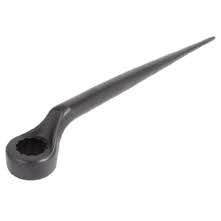Structural wrenches are specialised tools applying controlled torque on nuts, bolts and other construction fasteners, and on industrial fasteners. Standards, good use and safety are points and beginners must learn before engaging in any mechanical assembly. This guide gives clear details and tips on selecting, handling, and maintaining these instruments. Through main principles, beginners can work effectively and reduce their chances of destruction or injury.
Definition and purpose
Structural wrenches are manually operated hand tools designed to provide controlled torque on nuts, bolts, and other fasteners in structural assemblies. They are unlike standard wrenches, which are built to be sturdy with long handles that increase leverage and stability. To achieve optimal results, beginners can acquire parts of an impact socket supplier to assemble quality accessories that can provide reliable performance when addressing heavy-duty jobs. In construction, metalworking, and mechanical maintenance, these tools are critical in providing accurate application of force and minimizing the chances of damaging or losing fasteners during the installation and removal procedures.
Types of structural wrenches
Structural wrenches are available in a variety of versions, depending on the applications and the environment. Precision and greater leverage can be found in box-end wrenches, crowfoot attachments, and torque multiplier devices. Open-end styles provide fast access to close quarters, and combination wrenches have both open and closed ends which combine capabilities. Models may include adjustable jaws to accommodate various fastener sizes, which eliminates the dependence on other tools. Learners are advised to consider the demands of the task and operating conditions to select the most suitable kind, which will help them perform efficiently and remain safe when assembling a mechanism.
Materials and construction
High grade alloy steel or chrome vanadium is often used to make structural wrenches due to its ability to endure a considerable amount of force and corrosion. These materials are subjected to heat treatments by manufacturers to improve their durability and hardness to enable them to withstand extreme conditions. Handles can have knurled grips or protective coating to enhance comfort and traction whilst operating. Others have hollow shafts to save weight without sacrificing strength, thus easier to handle. Learning about these construction specifics can assist novices in choosing wrenches that can deliver a balance between performance, comfort, and durability regarding structural applications.
Safe usage practices
Safe use of structural wrenches entails following methods and precautions. To avoid slippage or rounding, operators are advised to validate such a correlation between wrench size and fastener dimensions. Before each operation, an inspection of the tools to see any cracking, abrasion, or deformation should have low odds of failure. Position of the body and application of controlled pressure minimizes the possibility of injury when applying torque. Novices should use proper personal protective gear i.e., gloves and safety glasses to protect against debris and pinch points. Best performance and extending tool life is achieved by following manufacturer recommendations.
Maintenance and care
Structural wrenches are reliable throughout their lifetimes with proper maintenance. Debris, grease, and rust should be removed using solvents after every use of tools. Regular wear, corrosion, and bent parts checks are also used to detect problems early before they affect performance or safety. To avoid sticking, light oil should be used to lubricate moving parts and pivot points. To prevent damage, wrenches must be kept in dry tool racks or cases. Through a consistent maintenance plan, beginners can prolong tool life and ensure that tools are in the best working condition when it comes to projects.
Structural wrenches play a vital role in construction and mechanical operations where they provide accuracy in the torque. Learners with proper knowledge of definitions, types, materials, safe operation, and maintenance will promote dependable outcomes and increase tools longevity. With the help of these recommendations, beginning users can choose and use structural wrenches in different projects efficiently and safely. These tools are maximized and performance and wear are minimized through consistent care.







